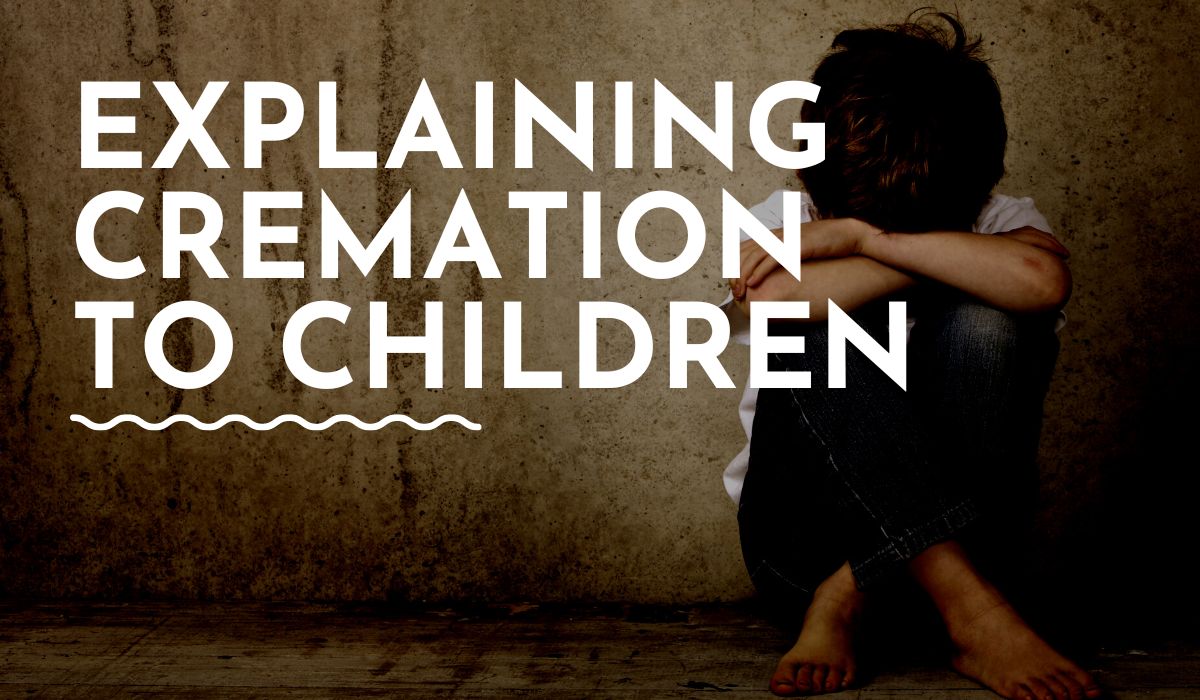If you have recently lost a beloved pet, explaining the concept of pet cremation to your child can be a difficult task.
Children may not always understand the permanence of death and may have many questions about what happens to their furry friends after they pass away.
However, with the right approach and a little preparation, you can help your child understand and come to terms with the process of pet cremation.
It’s important to keep in mind that every child is different and may react differently to the news of a pet’s passing.
Some children may have a strong emotional attachment to their pets and may need extra support and reassurance, while others may not be as affected.
However, regardless of their reaction, it’s important to be honest and open with your child about what has happened.
Therefore, below, we will share some tips on explaining pet cremation to children without resorting to lies or dismissal.

Why It’s Important to Tell Your Child About Pet Cremation
As a parent, it’s natural to want to shield your child from the harsh realities of death.
However, by explaining pet death and subsequent cremation to your child, you can help them understand that pets, like us, are a part of the natural cycle of life.
This conversation can provide an opportunity to teach your child about the concepts of life and death and the importance of honoring and remembering loved ones.
By being open and honest, you can help your child process their emotions, develop healthy coping mechanisms, and foster a sense of closure and acceptance.
Finally, involving your child in the memorial process can be a meaningful way for them to say goodbye and cherish the memories of their beloved pet while giving them a sense of control and ownership over their pet’s final resting place.
Overall, talking to your child about pet cremation may not be easy, but it’s an integral part of helping them cope with the loss of a beloved pet.
By being honest, open, and supportive, you can help your child understand what happened to their pet and find comfort and closure in the midst of their grief.
Preparing Yourself to Talk to Your Child
Before you begin the conversation, it is important to prepare yourself both emotionally and mentally.
Here are some tips to help you:
Take some time to process your own emotions: Losing a pet can be difficult, and you may need time to grieve before talking to your child.
Think about what you want to say beforehand: Consider the language you will use and how you will explain the cremation process.
Be honest with your child: It is important to tell the truth about what happens to a pet’s body after death.
Consider your child’s age and developmental stage: Younger children may need simpler explanations and reassurance, while older children may have more questions and concerns.
Practice what you will say: To feel more comfortable, you may want to rehearse the conversation with a friend or family member.
Remember that it is okay to show your emotions during the conversation: It can be helpful for your child to see that you are also affected by the loss of your pet. However, remaining calm and composed as much as possible is important.
By preparing yourself, you can help ensure that the conversation with your child goes as smoothly as possible.
Explaining Pet Cremation to Your Child
Explaining pet cremation to a child can be a sensitive and uncomfortable topic for some parents.
This is why it’s important to approach the conversation with honesty and mindfulness towards your child’s ability to comprehend the matter as well as the emotions they show during your conversation.
Here are some tips to help you explain pet cremation to your child:
Choose the Right Time and Place
Choosing the right time and place is essential when discussing pet cremation with your child.
Therefore, to ensure you have your child’s full attention, choose a calm, secure environment where they feel comfortable and are free from distractions such as watching a movie, playing a video game, or doing schoolwork.
Additionally, avoid times when your child is upset over something, as this can make the conversation even more uncomfortable and potentially traumatizing for the little one.
Use Simple Words and Phrases
When discussing pet cremation with your child, use words and phrases they can understand, as complex or technical terms can further confuse, overwhelm, or even upset them.
For example, instead of saying “cremation,” you might say “turning their body into ashes” to make the process seem clearer and open yourself to receiving questions that your child may need answers to understand the situation better.
Additionally, use phrases like “their ashes will always be near us” rather than abstract or intricate explanations to help them process and find comfort in the information.
Be Honest
It is important to be honest with your child about what happens during pet cremation, as being truthful can help them understand the reality of the situation and trust you.
Therefore, try explaining that the pet’s body is placed in a special machine that uses high temperatures to turn the body into ashes.
Additionally, emphasize that their pet is no longer in pain and that the ashes can be kept as a meaningful reminder of the love and joy their pet brought into your lives.
Answer Questions
Encourage your child to ask questions and answer them honestly. If you don’t know the answer to a question, it’s okay to say so and find out together.
This approach fosters open communication and allows your child to express their feelings and concerns.
Additionally, by addressing their inquiries, you help them better understand the process and reassure them that their emotions and thoughts are valid.
This can also be a bonding experience, showing your child you are there to support them through difficult times.
Be Understanding
Be aware of your child’s emotions and reactions.
If your child becomes upset or overwhelmed, take a break and come back to the conversation later.
It’s important to recognize that every child processes grief differently and may need time to absorb the information. Offer comfort and reassurance, letting them know it’s okay to feel sad or confused.
Being patient and empathetic will help your child feel supported and understood during this difficult time.
Discuss Options
Depending on your family’s beliefs and values, you may want to discuss different options for what to do with your pet’s ashes. This can help your child feel involved in the process and give them a sense of closure.
Additionally, if the thought of having their pet cremated is making your child distressed, it’s never a bad idea to ask them what they would rather do or discuss possibilities such as keeping the ashes in a special urn, scattering them in a meaningful location, creating a memorial garden, or burying your departed pet.
If your child chooses an aftercare method that can’t be done for whatever reason, calmly explain why their choice isn’t possible and offer alternative options.
This collaborative approach can provide comfort and help your child navigate their grief with a sense of empowerment and understanding.
Remember that every child is different, and there is no right way to explain pet cremation. The most important thing is to be honest, sensitive, and supportive of your child’s emotions and reactions.
Answering Your Child’s Questions and Concerns
When telling your child about pet cremation, they may have a lot of questions and concerns. It’s important to answer them honestly and age-appropriately.
Here are some common questions and concerns your child may have:
What is pet cremation? Your child may not understand what cremation means. Explain that it’s a way to respectfully say goodbye to their pet by turning their body into ashes.
Will my pet feel pain? Your child may worry that their pet will feel pain during the cremation process. Reassure them that their pet will not feel anything during the process.
What happens to the ashes? Your child may wonder what will happen to the ashes after the cremation. Explain that you can keep them in a special urn or scatter them in a place that was special to your pet.
Can I still visit my pet? Your child may be worried they won’t be able to visit their pet anymore. Explain that even though their physical body is gone, they can still remember their pet and visit their special spot.
It’s important to listen to your child’s concerns and answer their questions honestly.
Reassure them that their pet was loved and cared for and that the cremation process is a way to respectfully say goodbye.
Encourage your child to express their emotions and remember their pet in their own way.
Helping Your Child Cope with Grief

Losing a pet is a difficult experience for anyone, but it can be especially hard for children who may not fully understand what has happened.
It’s important to help your child cope with their grief and emotions during this time.
Here are a few tips to help your child through the grieving process:
1. Acknowledge their feelings: It’s important to validate your child’s feelings and let them know it’s okay to be sad or upset. Encourage them to express their emotions and listen to them without judgment.
2. Create a memorial: Creating a memorial for your pet can be a helpful way to honor their memory and provide closure for your child. You can create a scrapbook, make a special photo album, or even plant a tree in your pet’s memory.
3. Encourage them to talk: Encourage your child to talk about their pet and share memories. This can be a therapeutic way to process their emotions and keep their pet’s memory alive.
4. Encourage them to engage in a creative outlet: Encourage your child to write or draw their feelings towards their departed animal, which can help them cope with their loss.
5. Seek professional help: If your child is having a difficult time coping with their grief, consider seeking professional help. A therapist or counselor can help your child work through their emotions and provide additional support.